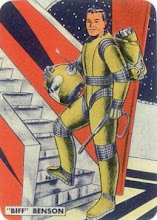First the city averages. The total population within the Chicago city limits is just under three million (2,896,106), with 48.5% male and 51.5% female. Forty-two percent of Chicago residents are white, African Americans make up 37% of the population, and 4.3% of Chicagoans are Asians, with other races making up the balance. Latinos (of any race) make up 26% of the population.
Zooming into our WFCW block club boundaries, the population is 4,153, with 56% male and 44% female residents. About 62% are white, 3% are African American, and almost 20% are Asian, with other races making up the balance. Latinos (of any race) comprise 19% of the population. Other than the racial makeup of our community, the demographics differ in several ways from the average of Chicago communities. First of all, the WFCW age distribution shows that the bulk of the population is in the age range from 25 to 44 year olds (55%), versus Chicago at 29% (see the graph below). The large proportion of these young adults means that the WFCW neighborhood has a dearth of both kids (younger than 20) and seniors (over 55) relative to the Chicago average.Chicago is indeed a city of neighborhoods, with some neighborhoods less diverse along racial or socioeconomic lines than others. Although WFCW differs along racial lines from the average, it has a higher percentage of immigrants compared to the city as a whole, with 31% of the residents born outside the United States (Chicago - 18%). Of those immigrants, 33% in WFCW are U.S. citizens, while Chicago numbers 45%. This difference is probably because many of the WFCW immigrants arrived relatively recently; 41% of WFCW residents born outside the U.S. immigrated after 2000 (Chicago – 25%).
Thirty-eight percent of WFCW residents use public transportation - a much higher number than the city average (13%) This is certainly no surprise given the proximity of train and bus lines. The housing stock for the neighborhood is much older than the Chicago average, with 72% of the housing built before 1939 versus 24% for the entire city. Much of this housing is rental with only 22% owner-occupied (Chicago – 67%). For this reason, residents tend to be more short-term, with 47% having moved into the neighborhood after 2005 (versus 27% for Chicago).
There are other distinctive features. A striking difference between WFCW and Chicago is in the “never married” category (56% versus 36%, respectively). Educational attainment is generally higher for WFCW with 49% Bachelor’s degree or higher, versus the 33% for Chicago. There are a higher percentage of management and professional workers in the WFCW versus the region (47% to 37% respectively), although median household income is slightly lower for WFCW ($53k versus $59k).
When I moved here a few years ago I was curious about the community. The Argyle Street neighborhood is promoted as the North Side Chinatown, Andersonville is the home of the Swedish American Museum, and some of the best Vietnamese dining in the city is right here. No matter how a community is marketed, it is, at its core, a reflection of the residents. Neighborhood stats are for those of us who want to understand how we fit into our community and how our community fits into the bigger picture regionally. I’ve found out a little bit more by looking at the numbers, and I hope to learn a whole lot more as I walk the blocks and get to know my neighbors.



